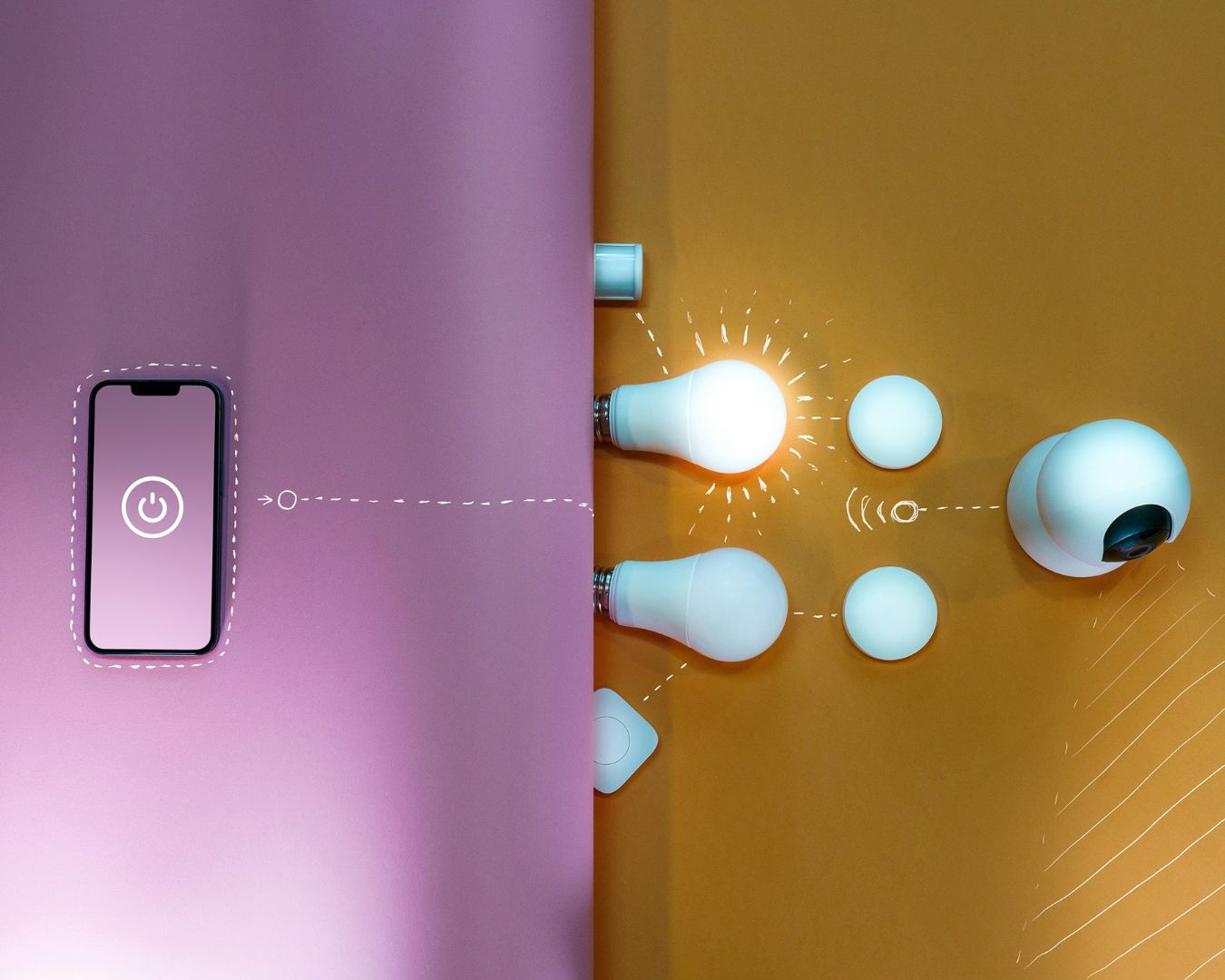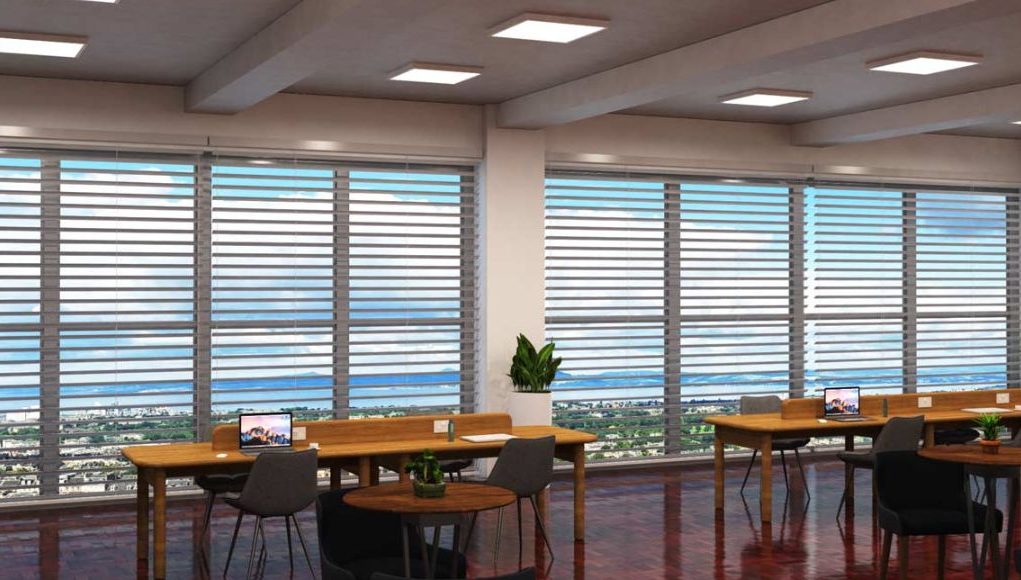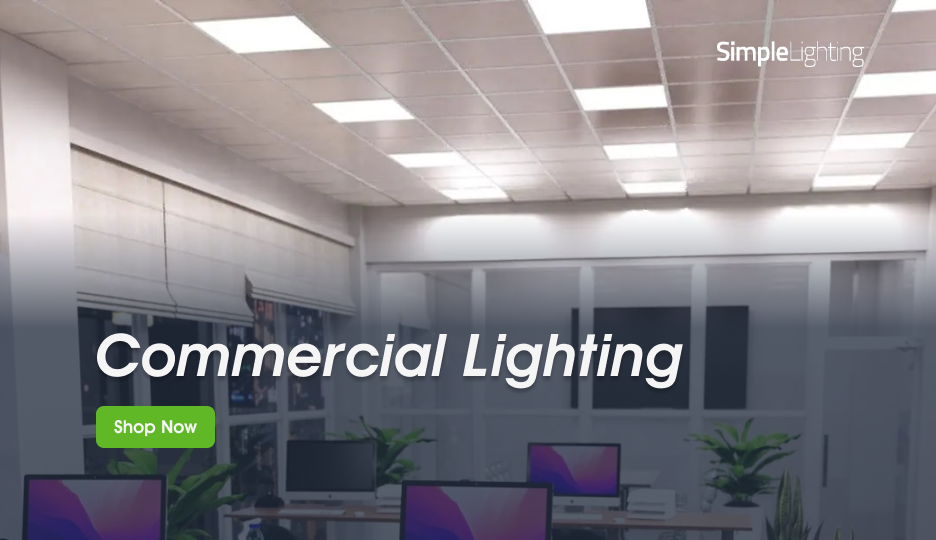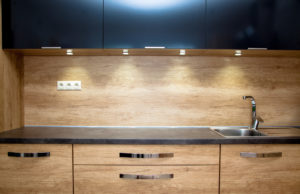Lighting has come a long way. It is no longer just about switching a bulb on or off or replacing tubes when they fail.
If you look closely at modern commercial spaces, such as offices, retail stores, hotels, and restaurants, you will notice that lighting has evolved into an intelligent system that Thomas Edison could never have predicted.
Now, it actively contributes to energy efficiency, staff productivity, customer experience, and even long-term cost savings. And that’s all thanks to smart lighting.
By combining sensors, software, and connectivity, businesses can create environments that respond dynamically to occupancy, daylight levels, and even time of day.
Ever been to a restaurant late in the afternoon, and as the sky gets darker, the light inside also gradually gets brighter? That’s just one example of smart lighting.
In this guide, we aim to explore and answer these questions: Why does smart lighting matter? What types of systems are available for commercial use? How do you implement smart lighting in both new builds and retrofit projects?
We hope you have a cuppa ready, because we’re hopping in.
Why Controls and Automation Matter
Energy Savings
Lighting accounts for a significant portion of electricity use in commercial buildings in the UK. (Somewhere around 21%.) If you think about it, that’s a lot. That’s why business owners are always seeking ways to reduce energy costs.
And smart controls? They can reduce energy consumption by half or more. Take an occupancy/motion sensor, for example. They only turn the lights on when someone is in the room and prevent lights from being left on in empty rooms.
Also, picture this:
A 10,000 sq ft office running lighting 12 hours a day. At £0.30 per kWh, even a 20% reduction in unnecessary lighting equates to thousands of pounds in savings per year.
Flexibility
The reality of a modern business is that floor plans change, departments expand or contract, and multi-use spaces require different lighting conditions. And if all you have for lighting are fluorescent tubes, you’re not meeting all these demands for optimal performance.
Think about it. A meeting room may need bright lighting for presentations in the morning, soft lighting for brainstorming after lunch, and a video-conference-optimised mode later in the day.
Controls and automation enable your lights to be flexible without the need to rewire; simply reprogram.
Occupant Experience
Lighting is what makes or breaks the experience of a person inside a space. It profoundly affects how people feel. Harsh or inconsistent lighting can cause headaches and fatigue. In contrast, responsive, adaptive lighting improves comfort, mood, and productivity.
In the retail setting, it enhances product displays; in hospitality, it sets the right welcoming ambience.
Key Control Types: Dimmers, PIR, Daylight Sensors
There’s something we should clear up. Just because smart lighting is cool (and useful, of course) doesn’t mean that every commercial space needs a full-blown smart system.
Often, combining a few control types that make sense for the space already delivers significant improvements.
Dimmers
Dimming controls adjust light levels to match tasks or mood. In offices, dimming allows open-plan areas to be set at comfortable levels, while meeting rooms can transition from bright to low-light conditions during presentations.
In restaurants, dimming helps create ambience during dinner service without completely switching fixtures off.
Combining dimming with zoning (dividing a space into distinct areas) can add depth to a space and make it easier to highlight important areas, displays, or products.
PIR (Passive Infrared) Sensors
PIR occupancy sensors detect movement and switch lights on or off accordingly. They’re ideal for areas with intermittent use, such as corridors, storerooms, and washrooms.
This eliminates the need for physical light switches, making the use of light fully automated and helping improve efficiency in the work environment.
Modern variants include microwave sensors (more sensitive and able to detect through partitions).
Daylight Sensors
Also called photocells, daylight sensors measure natural light levels and do either of these two things:
1. Turn on artificial lighting when they stop detecting daylight, and then turn the lights off when daylight returns for a dusk-to-dawn lighting, or
2. Adjust artificial lighting to maintain a consistent brightness.
The earlier restaurant example is a good representation of the latter. This prevents “over-lighting” and maximises the benefit of daylight harvesting.
These three control types are the most common in commercial settings. And in most cases, they’re enough.
But larger projects benefit even more from connected, networked control.

Networked Lighting Systems & Protocols
Commercial spaces, especially larger ones, typically have a more complex lighting system and are therefore more challenging to light than residential buildings. Lighting requirements are also more elaborate, so you usually have panel switches instead of standard light switches.
That’s why it’s always better to opt for a networked control so multiple fixtures and sensors can work together. The only thing to note is it requires communication protocols. These are essentially the “languages” that lights use to communicate with each other.
When controls are linked together into a networked system, building managers gain centralised control, data insights, and remote access.
Several protocols dominate the commercial lighting space:
DALI (Digital Addressable Lighting Interface)
What it is: DALI lighting is a wired protocol specifically designed for lighting applications. This allows each luminaire to be individually addressed and controlled.
Strengths: Widely adopted, reliable, ideal for large office or industrial spaces.
Example: Simple Lighting, Philips, Osram, and Tridonic all offer DALI-compatible drivers.
KNX
What it is: This is a broader building automation standard, so it’s not just used for lighting. It can integrate HVAC, security, blinds, etc.
Strengths: Good for complex, multi-service smart buildings.
Example: Hotels often utilise KNX for seamless control of guest room lights, curtains, and temperature.
Zigbee
You’ve probably heard of this before.
What it is: A wireless mesh protocol, often used in consumer smart home devices, but also suitable for small to medium commercial spaces.
What does it do? It allows fixtures, switches, and sensors to communicate.
Strengths: Flexible, easy to retrofit, scalable. Lower installation cost (no need to run extra control wiring).
Example: Zigbee-enabled downlights in retail shops allow quick layout changes without rewiring.
Bluetooth (BLE Mesh)
What it is: Uses Bluetooth for control, often managed via apps.
Strengths: Very accessible, scalable, and no gateway required in smaller setups.
Example: A cafe can install BLE-enabled track lights and let staff adjust scenes using a smartphone.
PoE (Power over Ethernet) Lighting
What it is: Uses Ethernet cables (yes, the same ones you use on your computers) to provide both power and control signals to luminaires.
Strengths: Centralises power and control, integrates with IT systems, and delivers high data bandwidth for analytics.
Example: Modern office campuses deploying PoE can manage lighting through the same infrastructure as their IT systems.
So, which protocol is best? Well, that depends.
- For new office builds: DALI or PoE are strong long-term bets, with the latter emerging as the “next generation” option.
- For retrofits, Zigbee or Bluetooth wins and often makes more sense.
- For integrated smart buildings, KNX delivers the most versatility. Also great for large projects.
Scheduling, Scenes and Adaptive Lighting
One of the most valuable benefits of smart lighting systems is the automation that extends beyond simple on/off functionality. It’s the ability to pre-program behaviour (of your lights).
Scheduling
Lights can follow time-based schedules. Your light can turn on gradually before working hours, dim during midday when sunlight peaks, and switch off after hours.
Scheduling reduces energy waste while ensuring spaces are always ready when needed.
Scenes
Scenes pre-program lighting states for specific tasks or moods. In a conference room, for example, you can have three different scenes ready:
- “Presentation mode”: Dimmed perimeter, brighter front wall.
- “Workshop/brainstorm mode”: Bright, uniform lighting.
- “Video call mode”: Even, face-friendly lighting.
Scene selection can be done via wall panels, smartphone apps, or even voice control.
Adaptive Lighting
The most advanced lighting systems adjust dynamically in response to both external and internal factors. For instance:
Circadian lighting that shifts colour temperature over the day to support alertness and your circadian rhythm.
Occupancy-driven lighting turns light/s on when presence is detected and turns them off after a set time of no detection.
All of these features elevate lighting from being merely functional to being actively supportive of wellbeing and performance. Honestly? Perfect for commercial spaces.
Retrofitting Controls vs New Install
Do you often ask this question?
“Do we add controls to existing lighting, or wait for a full upgrade?”
We have pros and cons for both retrofit and new installation. We’ll leave the decision up to you.
Retrofitting
- Pros: Lower upfront cost, minimal disruption, suitable for leases where full rewiring isn’t allowed.
- Cons: May be limited by existing wiring and fixtures. Compatibility with older ballasts or drivers can become an issue.
Example: Adding wireless Bluetooth dimmers and PIR sensors to an office with LED panels can reduce energy use by 20–30% without major building works.
New Install
- Pros: Full flexibility, easier integration of wired protocols (such as DALI or KNX), allowing for PoE or other advanced systems.
- Cons: Higher upfront cost, typically only feasible during new builds or major refurbishments.
Example: A new headquarters building may opt for PoE lighting to facilitate integration with IT and building management systems. This can provide in-depth analytics and also ensure future-proofing.
Still undecided? Here’s a small tip:
If the occupancy or tenancy period is still more than five (5+) years, investing in a new install makes sense. However, for shorter-term tenancies, retrofitting wireless controls is usually more practical.
Data and Analytics: Monitoring Usage
Smart lighting isn’t just about switching lights on and off. It’s also about insight.
What Data Can Be Collected?
- Energy consumption by zone or floor.
- Occupancy patterns (which areas are used most).
- Daylight contribution.
- Fixture performance and predictive maintenance.
Why It Matters
Try to think about it. How many empty rooms in your office are left with the lights on throughout the day? Having concrete data on your lighting usage has numerous benefits.
- Facilities management: Helps plan cleaning schedules and space use.
- Cost allocation: Assign energy costs to tenants or departments.
- Sustainability reporting: Meets ESG goals with accurate, auditable data.
Implementation Tips & Common Pitfalls
There are numerous benefits to be gained from smart lighting systems… but only if they are planned and executed effectively.
Here are some tips for your smart lighting success:
1. Start with a goal. Decide whether your priority is energy savings, occupant comfort, data, or all three.
2. Engage stakeholders early. Facilities, IT, and end-users all require input.
3. Choose open standards. Systems based on protocols like DALI or KNX avoid vendor lock-in.
4. Pilot first. Test on one floor or department before rolling out the site-wide implementation.
5. Plan for integration. Consider how lighting will interact with HVAC, blinds, or security. Lighting is part of your overall system, after all.
Common Pitfalls
Overcomplicating the system. No one wants their lighting controls to be rocket science. Keep interfaces intuitive.
Ignoring maintenance. Sensors need cleaning; firmware needs updating. You get the point.
Underestimating commissioning. Proper setup is essential. Budget time and cost for a qualified integrator. You can’t DIY everything.
Forgetting staff training. They’re the ones who will be using the system on a daily basis. If the occupants don’t know how to use scenes or apps, the system’s value is wasted.
Final Thoughts
Commercial lighting is no longer static. It is becoming more responsive, intelligent, and deeply integrated with broader building systems. And now, controls and automation aren’t just “nice to have”; they are essential for energy efficiency, flexibility, and a better occupant experience.
With thoughtful planning and the right system choice, businesses can unlock savings, sustainability, and satisfaction all under the same light… literally.
Whether you’re considering a simple retrofit with PIR sensors or a new-build PoE-enabled smart office, Simple Lighting has a range of fittings, controllers, and modules that will make your commercial smart lighting a breeze.
Check out our website today to get started!














